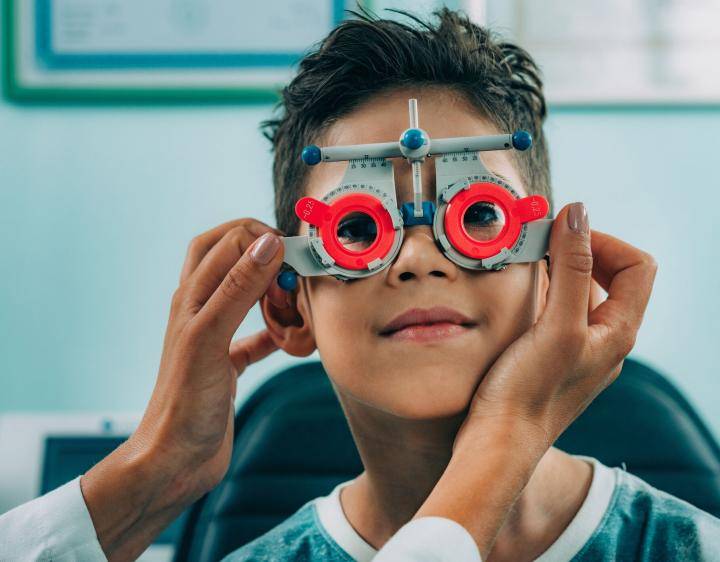
WHEB’s ‘Well-being’ theme is one of the strategy’s smaller and more heterogeneous themes covering everything from healthy eating to care for the elderly. The theme also includes companies that support ‘Hearing, vision and oral health’ and Cooper Companies has been a core holding in this sub-theme for over seven years. The company is a conglomerate combining two businesses; CooperVision which focuses on developing, manufacturing and selling contact lenses and CooperSurgical which focuses on women’s health and fertility treatments.
This article appears in our latest Quarterly Report.
Becoming a leader in women’s health
CooperSurgical is a franchise that has been built to focus solidly on women’s health, covering products and services used primarily by obstetricians and gynaecologists. This includes surgical and laparoscopic instruments for women’s surgery as well as products and services supporting in vitro fertilisation (IVF), contraception and obstetrical and neonatal care.
Over the past few years the company has pursued a strategy of vertical integration, particularly in fertility treatments. For most of its history in the fund, we have viewed the CooperSurgical business as having a clearer positive impact profile. Many of the products are critical to maintaining women’s health.
Overall this business has delivered solid mid-single digit organic growth driven primarily by market growth. In addition, the company’s strong competitive position and innovative product development has enabled this business to command high gross margins for the past few years.
CooperVision
Alongside CooperSurgical is the bigger CooperVision franchise. The two businesses have relatively little overlap with each other. CooperVision focuses exclusively on contact lenses. From an impact point of view, this business has historically offered a more modest positive impact on customers’ lives, which we see as equivalent to other vision-related products. Nonetheless, the company has been an early proponent of silicone hydrogel technology which has a number of modest health benefits compared to traditional contact lens materials including lowering the risks of eye infections.
Myopia in focus
Myopia (or short sightedness) has always been considered as a relatively benign condition that can usually be adequately corrected with spectacles or contact lenses. Although it is often progressive, irrespective of the patient’s age, the usual treatment has simply been to increase the negative power of the correcting lenses without much thought given to how to halt or slow progression.
There is nonetheless a cost associated with myopia. Correcting the condition was estimated to cost as much as $7.2bn in the US alone in 20101. Myopia can also lead to more severe conditions including glaucoma, cataracts and retinal detachment which can, if left untreated, result in blindness.
The condition is also extraordinarily widespread. Over 40% of the US population, 130 million people, suffer from myopia2. In China one third (450m people) are thought to suffer from the condition3. However, the incidence among 12 to 14 year olds is over 70%4. By 2050, it is estimated that 50% of the world’s population, a total of nearly 5 billion people, will be myopic5. The incidence of high myopia, a more severe form of the condition, is expected to quintuple to 1 billion sufferers by 2050 from 20006.
The causes of the increasing incidence of the condition are not entirely clear but are likely to include both genetic as well as environmental factors. The World Health Organisation (WHO) considers the genetic component to be small, and instead points to a lack of outdoor activity and excessive ‘near work’ as more likely to be the real cause7.
Controlling myopia
The increasing incidence of myopia and the progressive deterioration that is typical of the condition mean that control strategies are of real interest to health practitioners and regulators8. Early intervention is likely to prove especially valuable in reducing the risks of sight-threatening conditions in later life.
CooperVision has been an early innovator in this field having developed a myopia management contact lens called MiSight. The product has now been approved by the US Food and Drug Administration (FDA) to correct myopia and slow the progression of myopia in children aged 8-12 years old. According to the company, MiSight can reduce myopic progression by up to 59% when compared to control group of children wearing normal contact lenses9.
The product is already available in Canada where it was launched in 2018. It has proved popular in this market with one study finding that nearly three-quarters of optometrists now use the product as their first-line treatment for children suffering from paediatric myopia10. The product is expected to be launched in the US in March 2020 and will then be rolled-out across other geographies thereafter.
The opportunity for Cooper Companies
While there is great optimism about the product, it is likely to be some years before MiSight has a material impact on the company’s financial performance. We expect revenues to reach double digit millions of US$ in 2020 but anticipate that it will only become a profitable part of the company’s portfolio in 2023.
We are nonetheless very excited about the opportunity that MiSight represents for Cooper Companies. Cooper has the only daily lens specifically approved for myopia management and the need for more effective treatments is clear and growing. What’s more, the product has been shown to have a clear positive impact on sufferers and appears to be proving popular with optometrists. We are pleased with the position the company has established and are optimistic about the opportunity that this represents for the fund.
1 https://coopervision.co.uk/sites/coopervision.co.uk/files/the_concern_about_myopia_prevalence.pdf
2 https://www.popsci.com/nearly-5-billion-people-will-be-nearsighted-by-2050
3 ‘Hope for myopes’, The Economist, 18th January 2020
4 Ibid
5 https://www.aaojournal.org/article/S0161-6420(16)00025-7/abstract
6 Ibid
7 Op Cit 16
8 https://www.who.int/blindness/causes/MyopiaReportforWeb.pdf
9 http://investor.coopercos.com/static-files/ef18c70e-45e9-4ee6-a49a-a284abc5d624
10 Stifel, 9 December 2019
